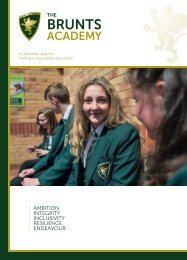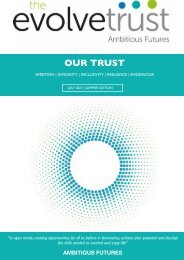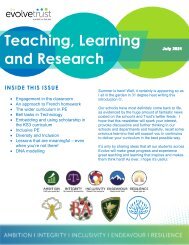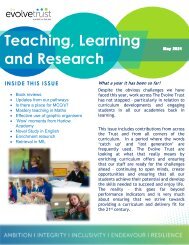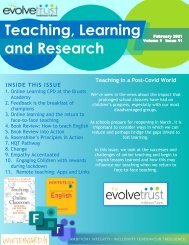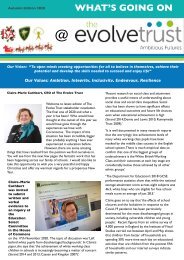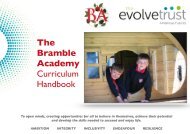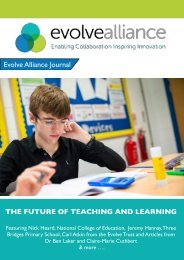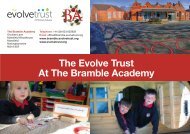Summer 1 Teaching and Learning Newsletter
Create successful ePaper yourself
Turn your PDF publications into a flip-book with our unique Google optimized e-Paper software.
Engaging Parents During School
Closures
By Janet ‘ Goodall Page 8
Supporting families to support learning
We also need to realise that not all families will have everything we might like them to have, and not
taking account of that could further disadvantage some of our most vulnerable students.
Many families won’t have enough devices for all children and adults in a family to work at the same time
– asynchronous support for learning, where possible, is a good option. Not all families will have a ready
store of Playdough, Lego or paper plates… we need to think creatively about supporting learning in
different situations. For many of us, this was one of the reasons why we wanted to be in education in
the first place, to facilitate learning wherever and whenever we could – if we can, this is a time to
recapture that creativity.
Many parents are very concerned about being able to support their children’s learning, particularly for
older children; parental lack of self-confidence was a barrier to engagement in learning long before
COVID-19. Early on in your communication with families, it would be useful to let parents know your
stock answers to ‘Miss/Sir, I can’t do this!’ You know the answers: ‘You can’t do it yet!’, ‘Okay, how do
you think you can find out how to do it?’, etc. Share these with parents – let parents know that it’s okay
not to know the answers, as long as the search continues.
This is not, as I’ve said, a normal time. Many families will be experiencing grief and loss; most of us are
worried about loved ones, particularly when separated. Trying to carry on as though nothing is different
is simply not going to work. We need to acknowledge the fear, the grief and the lack of time, equipment,
training and resources facing families as they try to support learning.
I’ve said that we need to start from the basics, from the root, and the basics here are that everyone
involved wants what’s best for the child: you, the parents, other family members. We need to be working
with families to provide that ‘best’.
‘Best’ is not synonymous with ‘everything’ – not everything can be the best. Think about what’s really
important – what do your students really need to know, to be able to do? What can be left aside for now?
Approach creating materials for family learning as you would any other teaching material: start from the
endpoint and work backwards, to how to arrive there. And please, let parents know that you’re not
expecting them to be professional teachers: you’re hoping that they will support (not necessarily even
lead) their children’s learning, with your help.
The past, the present and the future
Teachers, parents, local authorities and government bodies are all trying to make this work for children.
No one knows what the long-term effects will be. I’m hoping that one outcome will be that many parents
are far more connected with their children’s learning than they had been in the past, and that the
partnerships between teachers and families that are being created and strengthened now will continue.
We won’t walk back into the same classrooms, with the same young people, as the same teachers: we’re
all being changed by the pandemic. But it’s not about the classroom or the school – but then, it never
was. It’s always, fundamentally, been about the learning.





